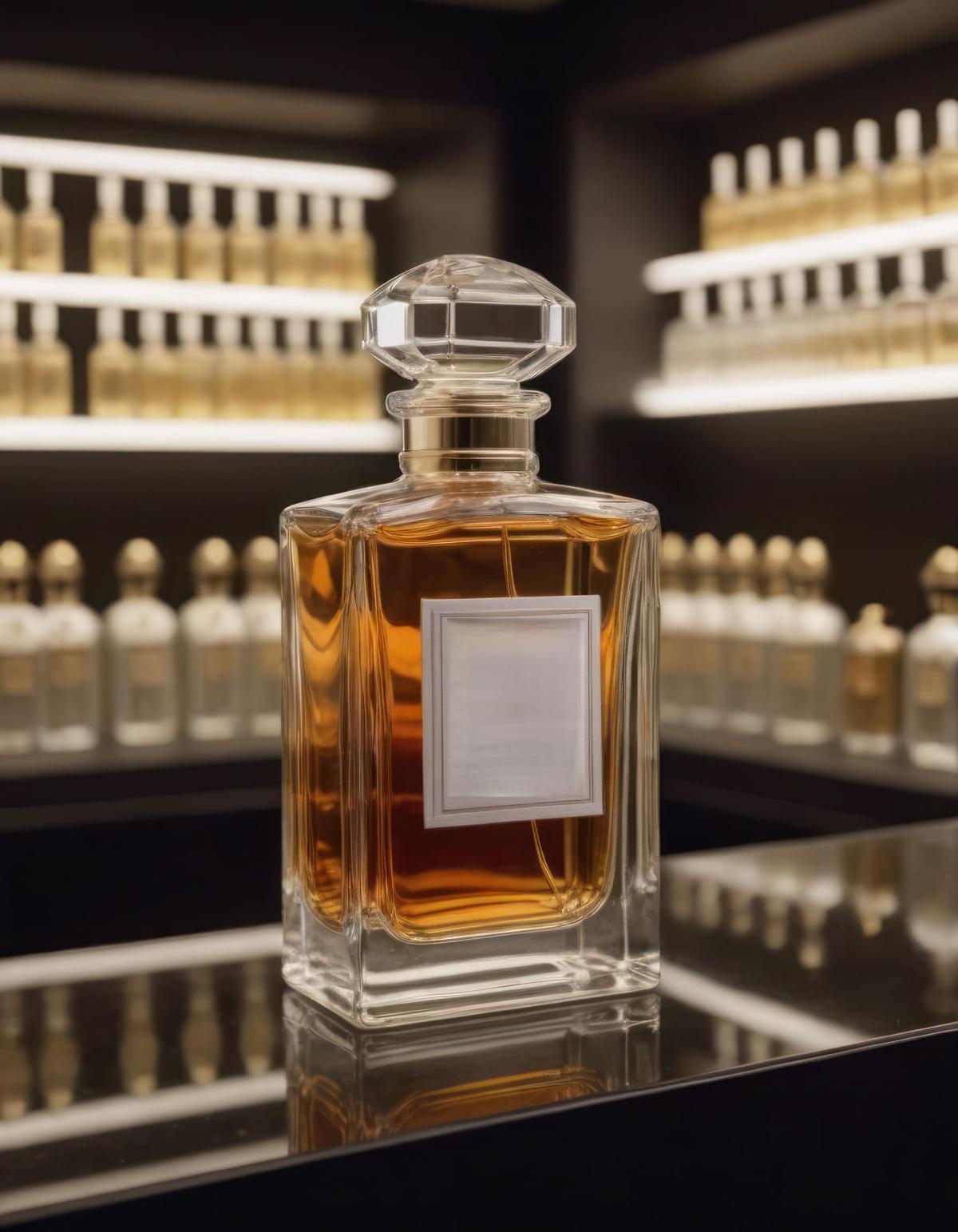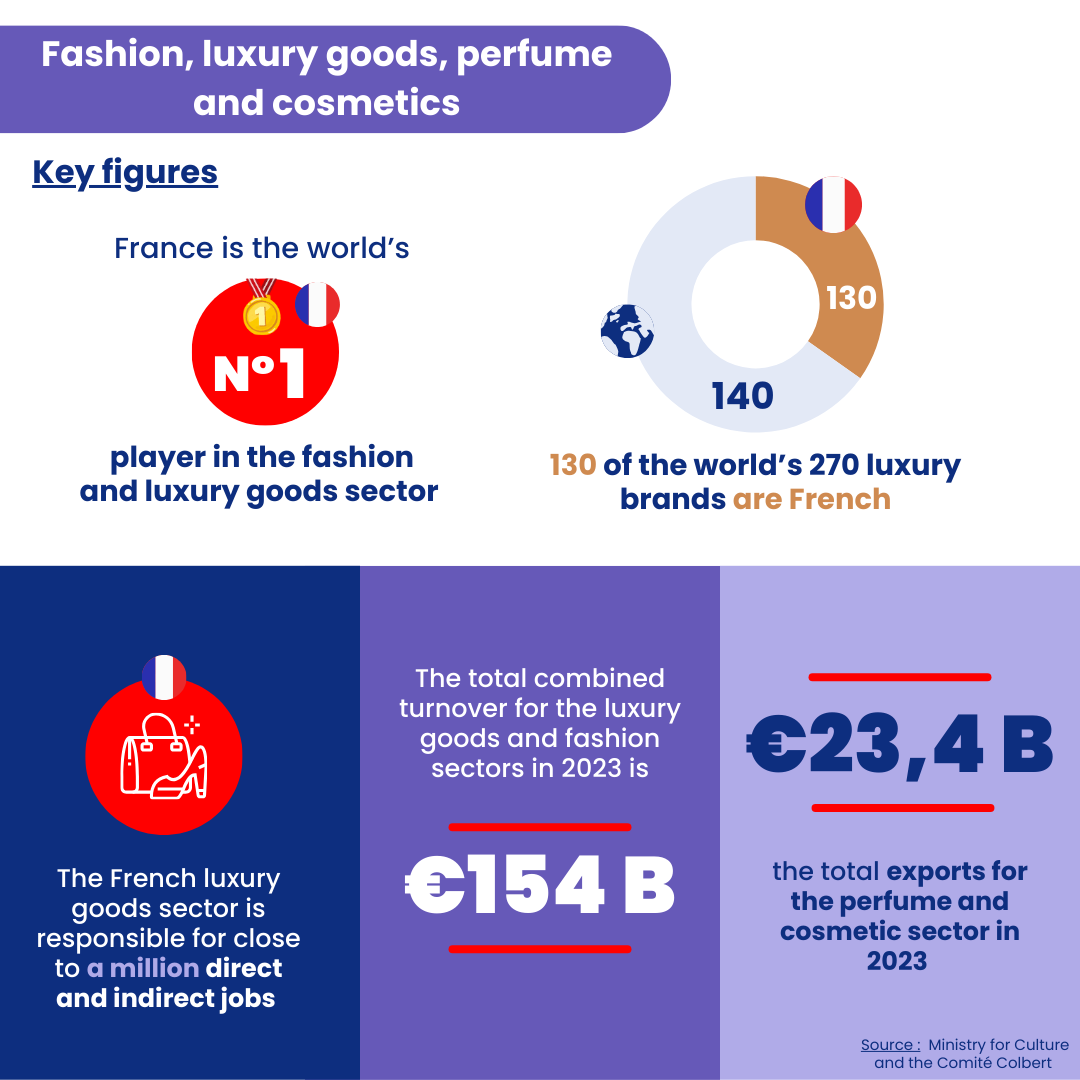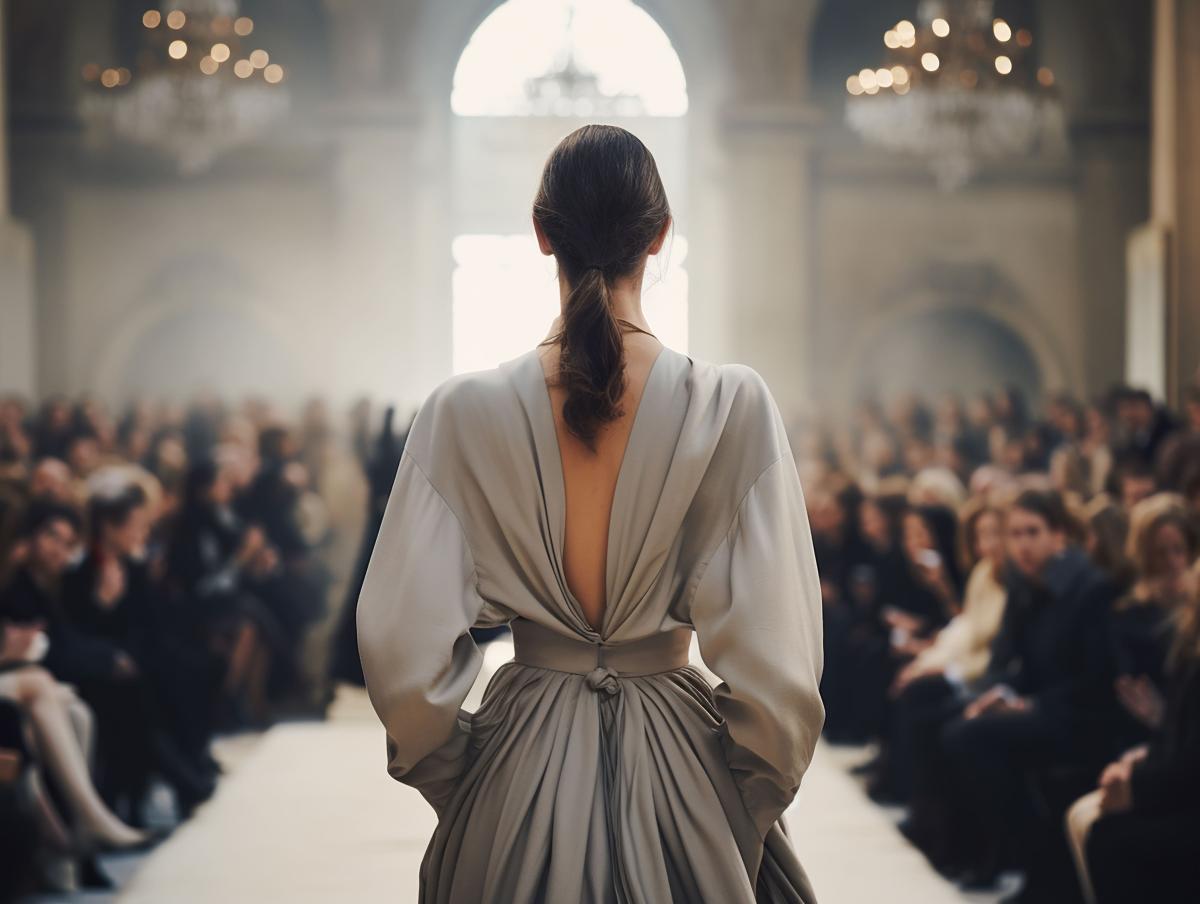France – the undisputed benchmark for fashion, luxury goods, perfume and cosmetics
Fashion – a creative and economic empire
France’s heritage is based on centuries of tradition, refinement and innovation. Since the 18th century, French artisans, such as couturiers, jewellers and perfumers, have developed a unique style and a quest for excellence. This heritage is embodied today by legendary names such as Chanel, Dior, Hermès, and Louis Vuitton.
Every year, Paris attracts the world’s attention thanks to its vibrant Fashion Weeks, when leading designers unveil their collections. The world’s fashion capital is able to provide extraordinary backdrops for its catwalks that combine elegance and history in venues such as the Grand Palais, the Palais de Tokyo, and the Carrousel du Louvre, all of which host frequent haute-couture events.
As well as extending France’s global influence, the fashion and luxury goods sector is one of the driving forces behind the country’s economy. In 2022, the sector had a turnover of 154 billion euros (Source: Ministry of Economic Affairs) and the fashion and luxury goods industries were responsible for 615,000 direct and indirect jobs, ranging from designers to experts in digital marketing.
“Fashion is a true heavyweight player in French economic activity, and is a sector that is bigger than the automobile and aeronautical sectors combined”, explains Xavier Romatet, dean of the Institut Français de la Mode.

French perfume – a timeless art form
From the eaux de cologne of the 18th century to iconic fragrances such as Chanel N°5 and Dior’s J’adore, France has built its reputation as the world’s perfume capital. In the town of Grasse, in Provence, fields of flowers and distilleries perpetuate this ancestral tradition.
Thanks to its 6,300 businesses in France, 226,000 employees, 71 billion euros of turnover and 23.4 billion euros of exports, the cosmetics and perfume sector is an uncontested global behemoth (Source: Cosmetic Valley). Giants such as Guerlain, Lancôme and Saint Laurent continue to entice perfume-lovers through innovative creations developed via a combination of modern techniques and artisanal expertise.

A country at the cutting-edge of global cosmetics
In terms of cosmetics, France also occupies a dominant position. Brand names such as L’Oréal, Clarins and Bioderma combine scientific expertise and naturalness to meet growing global demand. French laboratories renowned for their excellence are developing products at the cutting-edge of technology, ranging from anti-ageing treatments to suncare products and organic cosmetics. Added to this is a growing focus on sustainability, with brands introducing more and more recyclable packaging and responsibly sourced ingredients.

Savoir-faire to be preserved
Numerous public and private initiatives have been developed to preserve France’s artisanal savoir-faire, to promote innovation and to meet environmental and social challenges. A prime example is the Living Heritage Company label, created by the French State to showcase companies that are recognised for their excellence and their unique artisanal savoir-faire (such as embroidery, leather work, and weaving). Also worth mentioning is the state support provided for apprenticeships in order to train young people in traditional crafts and techniques at schools such as the Institut Français de la Mode and the École de la Chambre Syndicale de la Couture Parisienne. On the corporate side, the Fondation Chanel and LVMH Métiers d’Arts both support projects to preserve luxury arts and crafts and to ensure the passing down of skills and expertise. The Comité Stratégique de Filière Mode & Luxe, a committee piloted by the French government in partnership with leading players in the private sector, aims to coordinate efforts in order to maintain the competitiveness of the fashion and luxury goods sector in the face of international competition and is focused around three strategic priorities: ecological transition, the attractiveness of artisanal skills, and the strengthening of French presence in emerging markets. Lastly, the Comité Colbert brings together the country’ s largest luxury fashion houses, and promotes France’s savoir-faire and luxury goods abroad by organising exclusive events such as fashion shows and private salons.
Fully engaged towns and cities
While Paris is the uncontested heart for fashion and luxury goods and the nerve centre for beauty brands, Grasse, Lyon and Bordeaux each have their own strong identity and play a strategic role in these sectors.
● Situated in the Provence-Alpes-Côte d’Azur region, Grasse is the cradle of the perfume industry. Renowned for its legendary fields of flowers (jasmine, May rose etc), the town is also home to prestigious companies such as Fragonard, Molinard, and Galimard. The town also attracts tourists from around the world thanks to the Musée International de la Parfumerie.
● Lyon is renowned for its history of silk manufacturing and plays a key role in the fashion sector thanks to the heritage of its “canuts” (silk workers) and its innovations in the textile industry. Major fashion houses and designers still source materials in this region thanks to the quality of fabric manufactured here. The city is also an important hub for the cosmetics industry in France, in particular thanks to its tradition of scientific innovation and the presence of a dynamic ecosystem which plays hosts to the laboratories of L’Oréal, Sanofi and Gattefossé, the latter a global supplier of ingredients for the cosmetics industry.
● Bordeaux combines its historical savoir-faire in the luxury goods sector with significant experience in natural cosmetics. Brands such as Caudalie uses the active ingredients in grapes to create environmentally friendly products. Bordeaux is also a key city for the marketing and distribution of luxury goods.
● Orléans and Tours play an essential role in the cosmetics ecosystem in France thanks to Cosmetic Valley, a competitiveness cluster dedicated to innovation and sustainable development within the sector. The two cities are responsible for the production of fifteen brands: Dior, Guerlain, Shiseido, as well as Paco Rabanne, Nina Ricci (Puig group), Sisley and Caudalie, all of whom manufacture goods for the global market.



